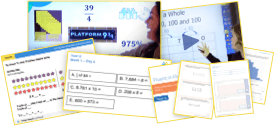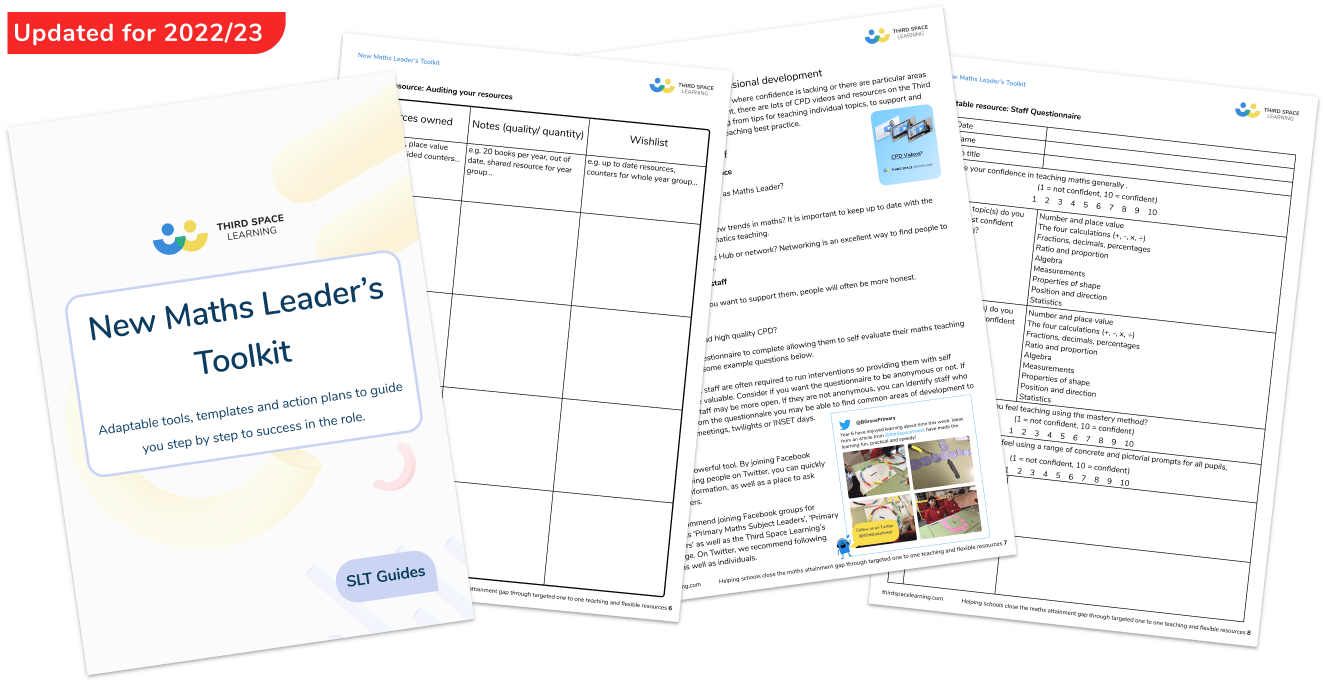How Dual Coding Can Increase Student Learning: A Guide For Teachers
Dual coding can improve students’ learning, encode information in long-term memory and help students retrieve information from long-term memory more efficiently when implemented correctly.
This article explores dual coding theory, the theoretical foundations behind it and the benefits of using dual coding in the classroom. It serves as a how-to guide for teachers wishing to employ dual coding strategies to improve learning and to help students make informed decisions about their study skills and revision techniques.
What is dual coding?
Dual coding is the process of presenting learners with new information in two different formats to improve learning. Normally this is visual and auditory. Presenting information using multiple stimuli can help learners to encode, store and retrieve information more effectively from their long-term memory.
Maths Leader's Toolkit
Adaptable tools, templates and action plans to guide you step by step to success in your maths leader role.
Download Free Now!Dual coding theory
Allan Paivio developed the Dual coding theory in 1986. He proposed that verbal information and visual information are encoded into long-term memory through separate processes. Paivio believes that learning improves when information is presented in these two ways simultaneously.
Consequently, he became an advocate for multimedia learning, which combines verbal and non-verbal stimuli. An annotated diagram or a verbal description of a piece of artwork are simple examples of this approach.
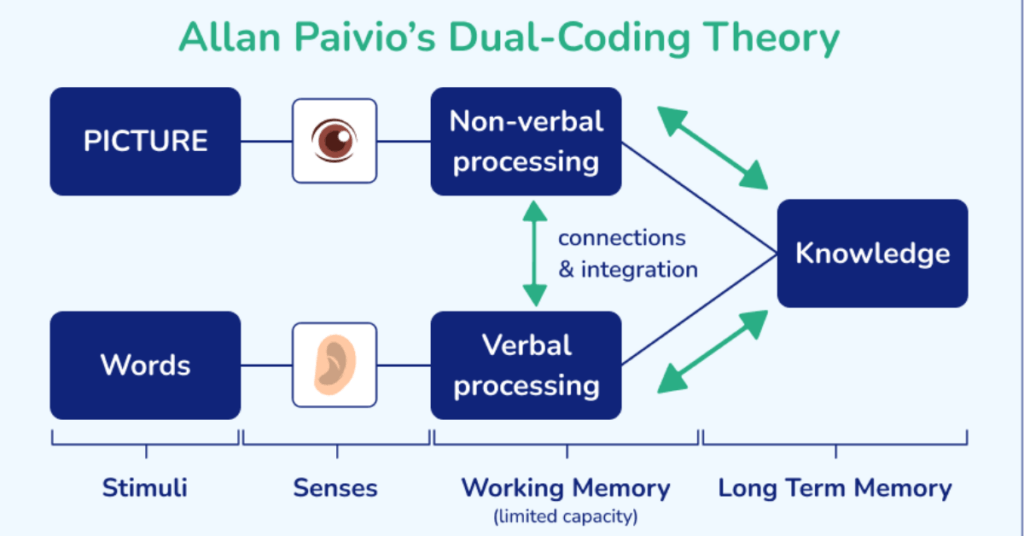
Cognitive load theory
Cognitive science provides support for Paivio’s theory through research focused on working memory. Sometimes this is referred to as short-term memory.
According to cognitive load theory, the working memory processes and transfers information consciously to the long-term memory. This process takes place through:
- Repetition
- Elaboration
- Meaningfully encoding into a pre-existing schema
The working memory contains multiple stores that process information from different modalities.
Visuospatial sketchpad
A visuospatial sketchpad processes visual information, such as:
- Images
- Colour
- The location of objects relative to each other
Pavio describes this as non-verbal information.
Articulatory or phonological loop
This store processes speech, sounds, and the ‘inner voice’ when reading or writing. Dual coding theory refers to these as verbal information.
Episodic buffer and central executive
While dual coding theory does not reference these components, they:
- Integrate information from the other two stores
- Recall relevant information from the long-term memory
- Direct attention to the appropriate store
Cognitive science research shows that learning is impaired if too much information is presented to a single store and causes cognitive overload. For example, listening to a teacher talk while copying text from the whiteboard can overload a student’s phonological loop.
Conversely, the working memory can process a greater volume of information effectively if it is presented to two or more stores simultaneously. For example, listening to a teacher describing a diagram displayed on the board. This finding aligns with the dual coding theory.
Benefits of dual coding
In 2016, Smith and Weinstein found that dual coding leads to greater comprehension and deeper understanding. The additional detail that students receive through verbal and non-verbal information helps them to assimilate new knowledge with related prior learning. In turn, this increases their understanding of the new material.
Mayer (2014) reported better learning outcomes and retention for information presented using visual and auditory methods. This is because the information is more likely to be stored correctly in long-term memory. Additionally, there were more cues available to aid recall during retrieval practice.
Student learning also increases through dual coding because students are less likely to experience cognitive overload during the learning process.
Simultaneous presentation of verbal and non-verbal information means the learner can process the information more effectively than if the same volume of information presents in a single format.
Combining these two modalities also has an engaging effect on learners as the material becomes more stimulating and interesting.
How does dual coding improve learning?
Three memory processes need to occur for learning to successfully take place:
- The long-term memory needs to successfully encode new information
- It needs to be stored appropriately, along with related information
- When the learner needs the information, they need to recall it successfully
Dual coding benefits learning at all three stages. Presenting new information in two modalities helps with elaboration and promotes a deeper understanding of the material. In turn, this helps students accurately encode the new information and integrate it with related prior-learning.
Lastly, dual coding provides learners with verbal and non-verbal memory cues. This makes it easier to recall the information when required.
Dual coding in the classroom
Teachers can use dual coding in the classroom through small changes to the content or delivery of pre-existing learning materials.
Accompany verbal explanations with an image or diagram on the whiteboard. For example, when teaching fractions or proportion, images can help students understand the verbal explanation and encode the information. According to Rosenshine’s principles of instruction, breaking down new information into small steps like this helps students retain information.
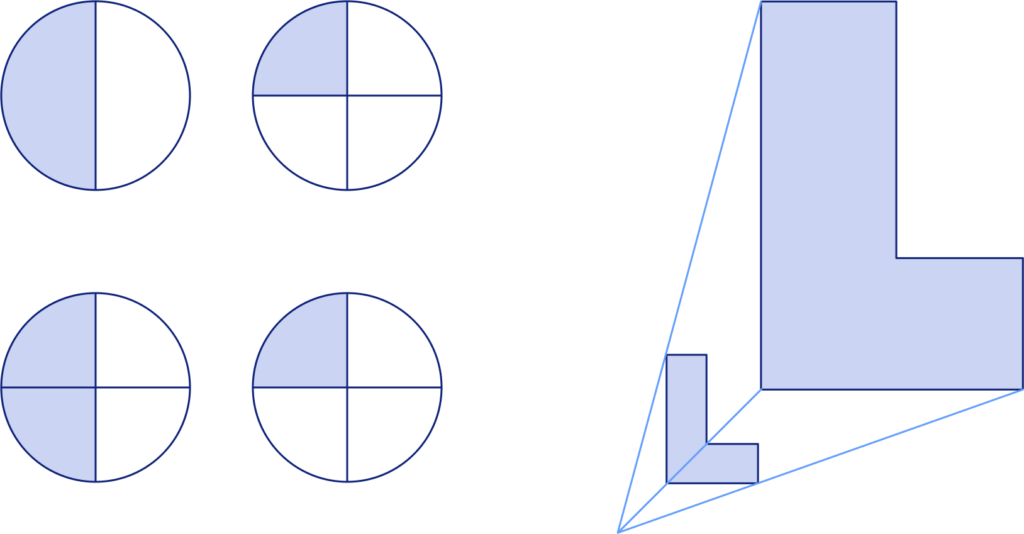
If it is not possible or feasible to have a relevant picture displayed, have nothing on the board. This allows students to focus all of their attention on listening to the explanation.
Always avoid having writing on the board when giving a verbal explanation. Both stimuli use the phonological loop, therefore, students cannot give either source their full attention.
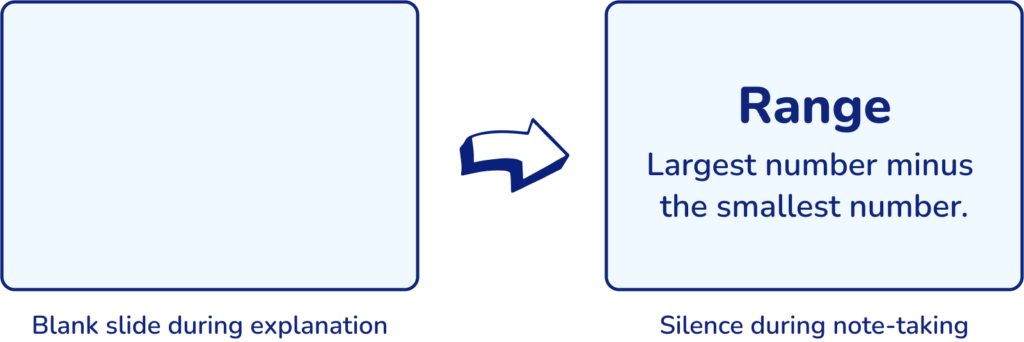
When using PowerPoint presentations, try not to talk through slides displaying text. Give students time to read the information and copy it down if that is what they need to do, then move to a slide of a related image for further discussion and elaboration. [Image 4].
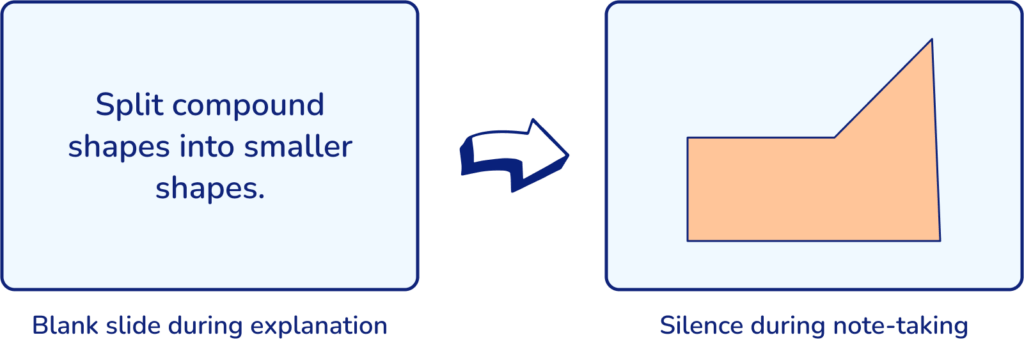
Sometimes, it will be necessary to have the text displayed on the screen for the duration of the explanation; this is often the case when talking through a new method for solving mathematics problems. In these cases, give students time to study the method in silence and write it down before the explanation begins.
Highlighting key points adds non-verbal cues to the explanation, taking advantage of the dual coding effect. It can feel very unnatural to write down lines of a method in silence and ask students to write down something before they have heard the explanation, but this approach will significantly reduce the cognitive load of the task.
Once students study and write the method down, the phonological loop does not need to process this information. This allows learners to use this store to pay full attention to the verbal explanation.
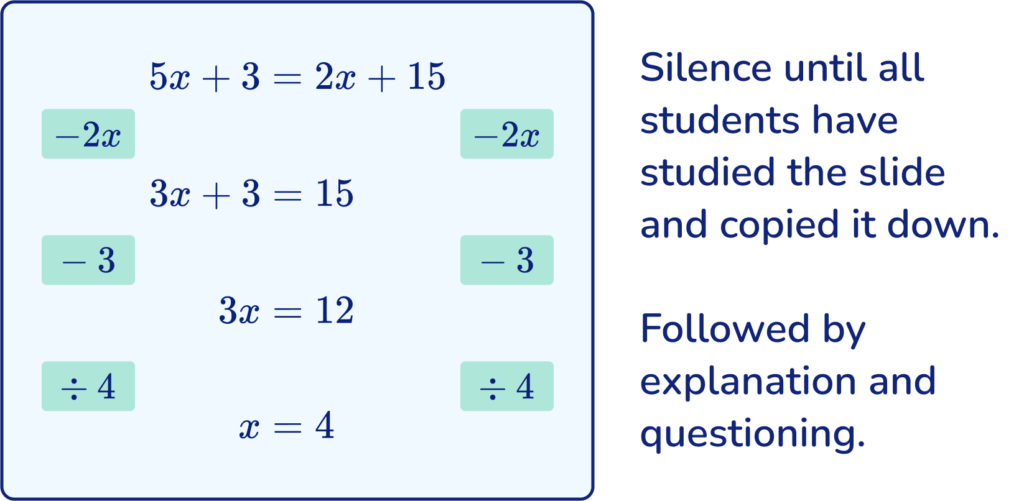
Infographics provide useful visual representations that combine verbal and non-verbal information in a meaningful way. For example, writing ACUTE ANGLE and changing the C into an acute angle, writing square numbers inside their corresponding squares, or using pie charts to show equivalent fractions.

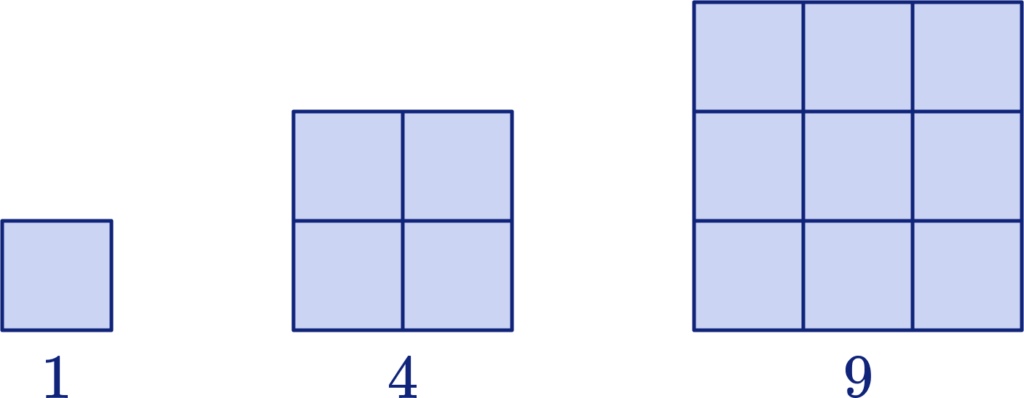
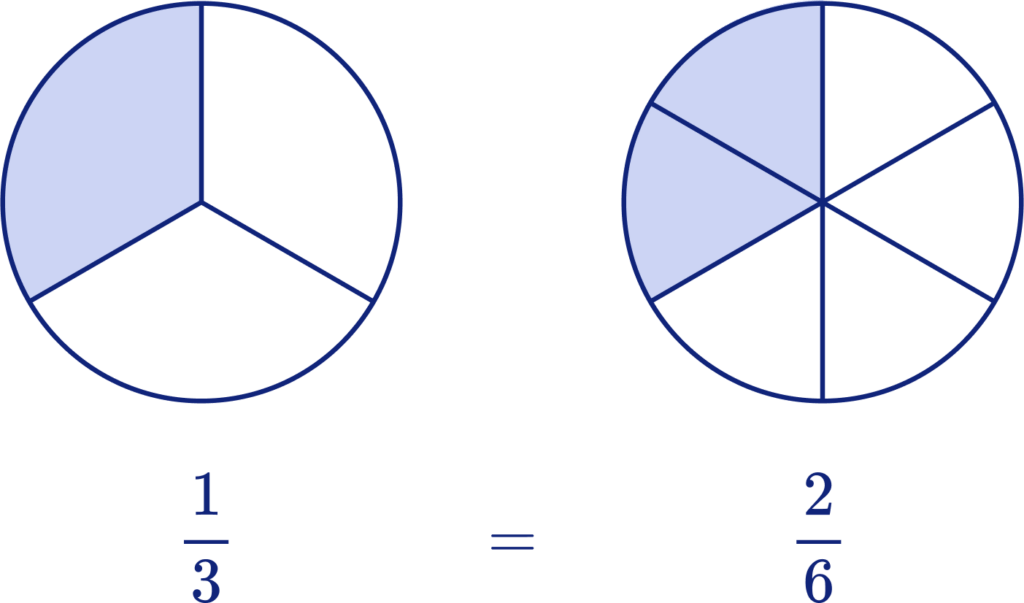
Dual coding learning strategies
Students can utilise the power of dual coding by selecting revision strategies that combine verbal and non-verbal information. Secondary school students have greater autonomy in the way they approach revision. They must learn the benefits of dual coding to make informed decisions about which strategies to use.
The following approaches all provide opportunities for dual coding:
Timelines
A timeline helps give a visual representation of a sequence of events or key dates arranged in chronological order.
The line and the relative position of events to each other is non-verbal information, while the dates, names and descriptions are verbal.
Mind maps
Creating mind maps helps display connections between subtopics that are related to a common theme. For example, 2D shapes.
They can also help students structure their mathematical reasoning (e.g. calculating percentages without a calculator) or plan for extended questions in English lessons.
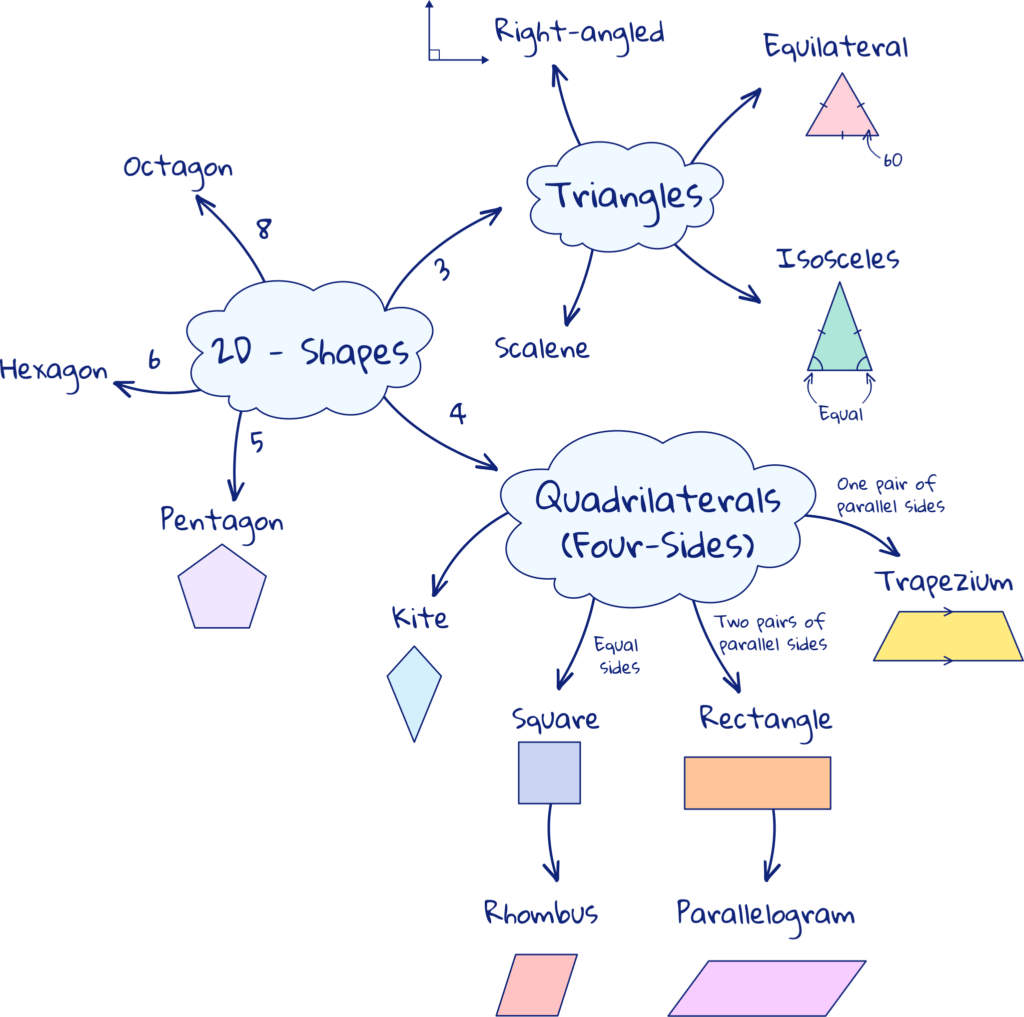
Venn diagrams
Diagrams such as Venn diagrams provide a visual display of the commonalities and differences between two or more sets of information.
In RS Venn diagrams may compare the beliefs of two religions. In Geography, students could compare the characteristics of two ecosystems. In mathematics, they could compare geometric characteristics.
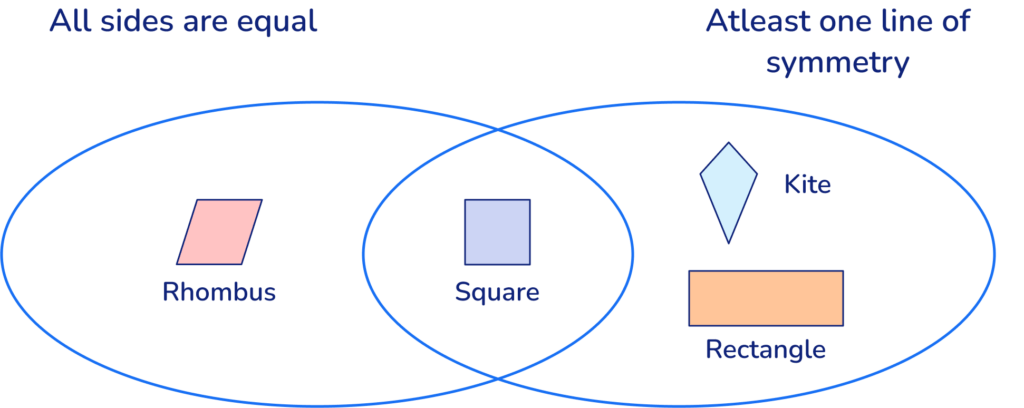
Graphic organisers
Visual organisers aim to organise information as well as describing relationships between different elements. They combine verbal labels with non-verbal elements including:
- Arrows
- Boxes
- Branches
- Tables
- Graphs
- Diagrams
Graphic organisers tend to be less flexible in their layout than mind maps. These usually summarise information. Oliver Caviglioli created a bank of graphic organisers for students, including plot summaries for popular stories.
Dual coding in Third Space Learning
Third Space Learning’s academic team and tutors employ dual coding throughout every session. Verbal explanations accompany images in the interactive classroom to help students learn how to learn maths, retain information and encode it into the long-term memory.
The range of interactive tools available to both tutors and students allow them to highlight the key information to further help embed information using dual coding. This also helps to reduce the possibility of cognitive overload.
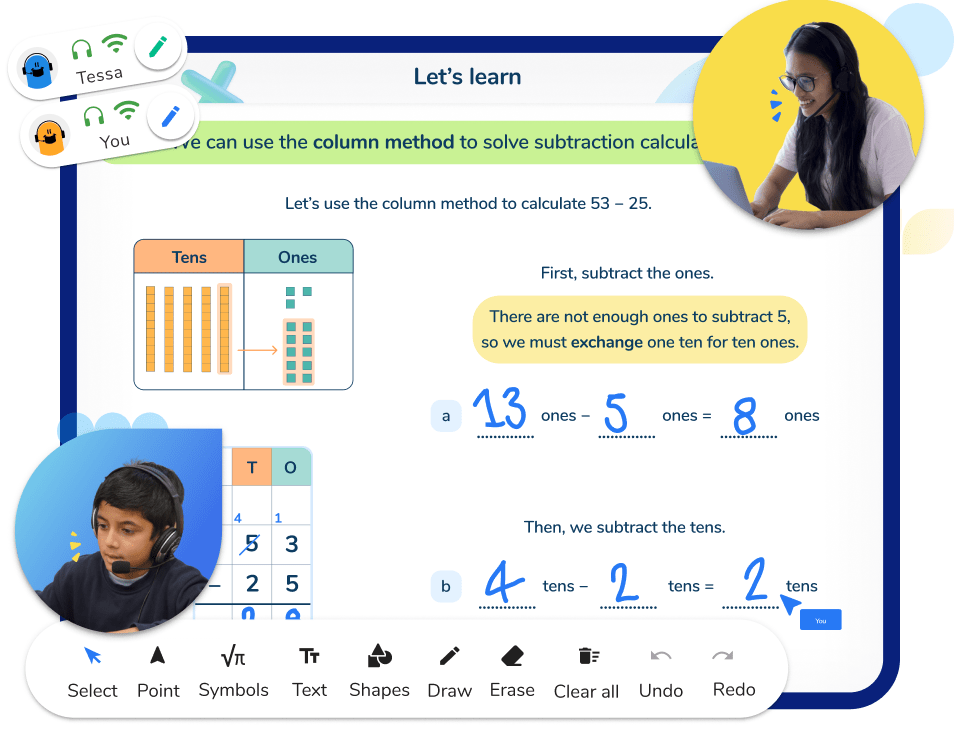
Challenges of dual coding
No pedagogy is without its challenges. Dual coding positively impacts student learning when used correctly. Educators must ensure they have sufficient training and understanding to implement dual coding so it has the desired effect.
Cognitive overload
When attempting to use dual coding, there is always a risk of inadvertently creating cognitive overload for learners (Clark and Lyons, 2004). Combining verbal and non-verbal delivery methods, the volume of information presented to students simultaneously increases.
While the different modalities occupy two stores of students’ working memory (the phonological loop and visuospatial sketchpad), it is still important to limit the total amount of information that students need to attend to at any given time.
Images should be meaningful and used to purposefully enhance learning, not for decoration or contrived to provide a non-verbal element to the learning. Similarly, highlighting text or changing the font colour can enhance learning, but this should not be so extreme that it causes a distraction.
At all times, consider what you want your learners to focus on and make it as easy as possible for them to draw their attention towards these things.
Learning styles
Dual coding does not provide support for the existence of learning styles. To the contrary, dual coding improves learning because it encourages students to process both verbal and non-verbal information simultaneously.
While some students may have a strong preference for a particular learning style, there is no evidence to suggest that learning is most effective when they exclusively use this style.
Dual coding advocates that people process verbal and non-verbal information separately and that combining the two will lead to better learning outcomes. Students should not choose between the two styles, encourage them to learn through both.
Incorporating dual coding into CPD programmes
Senior leaders should incorporate dual coding into CPD programmes for teachers as both the content and method of delivery.
Content
Teachers must understand the benefits of dual coding so they can incorporate it into their teaching strategies. They can also educate their students about the benefits of selecting learning strategies that combine verbal and non-verbal stimuli.
When students better understand how their memory works, including their working memory and how information transfers to long-term memory, they can make better-informed decisions about their learning.
This understanding enhances their ability to become self-regulated learners and engage with metacognition and metacognitive skills, thinking about and evaluating the learning process.
To begin with, teachers may wish to use collaborative lesson planning to incorporate dual coding into lesson plans.
Delivery
One of the most pertinent ways of demonstrating the power of dual coding is to incorporate it into the way CPD is delivered to teachers.
Too often, professional learning for teachers ignores the advice it is delivering. Powerpoint slides are often full of text while someone explains the content in an alternative way.
Alternatively, summarise the discussion point with an image on a slide and accompany it with a verbal description. Or use infographics to make the content more memorable.
Modelling dual coding consistently during presentations to teachers reinforces its effectiveness and helps them to feel more comfortable duplicating it in their classroom.
Conclusion
Verbal material and visual images process separately in the working memory. Pairing images with text or speech helps students can process more information simultaneously.
In addition to avoiding cognitive overload, dual coding helps students to understand, encode and recall information more effectively.
Teachers can model dual coding in the classroom through small changes to teaching resources and methods of delivery.
Dual Coding FAQ
What is dual coding?
Dual coding is the process of presenting new information to students in a verbal and non-verbal format. Learners can process more information when it is presented in this way and makes the new content more memorable.
What are the benefits of dual coding?
Dual coding has been shown to increase students’ comprehension, improve their ability to encode information into their long-term memory, and enhance recall.
How can dual coding be used in lessons?
Combine images and text in powerpoint presentations or accompany verbal explanations with a simple image that adds meaning and context to the discussion. You can also create infographics, mind maps, Venn diagrams or timelines to incorporate verbal and non-verbal information into your teaching resources.
References
Caviglioli, O. (2019). Dual coding with teachers. Hachette UK.
Paivio, A. (1986). Mental representations: A dual coding approach. Oxford University Press.
Smith, S. M., & Weinstein, Y. (2019). Theoretical Foundations and Instructional Principles for Teaching and Learning to Read. In J. P. Sabatini, E. R. Albro, & T. O’Reilly (Eds.), Measuring Reading Competence: A Theoretical-Prescriptive Approach (pp. 27–43). Harvard Education Press.
DO YOU HAVE STUDENTS WHO NEED MORE SUPPORT IN MATHS?
Every week Third Space Learning’s specialist school tutors support thousands of students across hundreds of schools with weekly online 1 to 1 maths lessons designed to plug gaps and boost progress.
Since 2013 these personalised one to 1 lessons have helped over 150,000 primary and secondary students become more confident, able mathematicians.
Learn how tutors build rapport or request a personalised quote for your school to speak to us about your school’s needs and how we can help.
